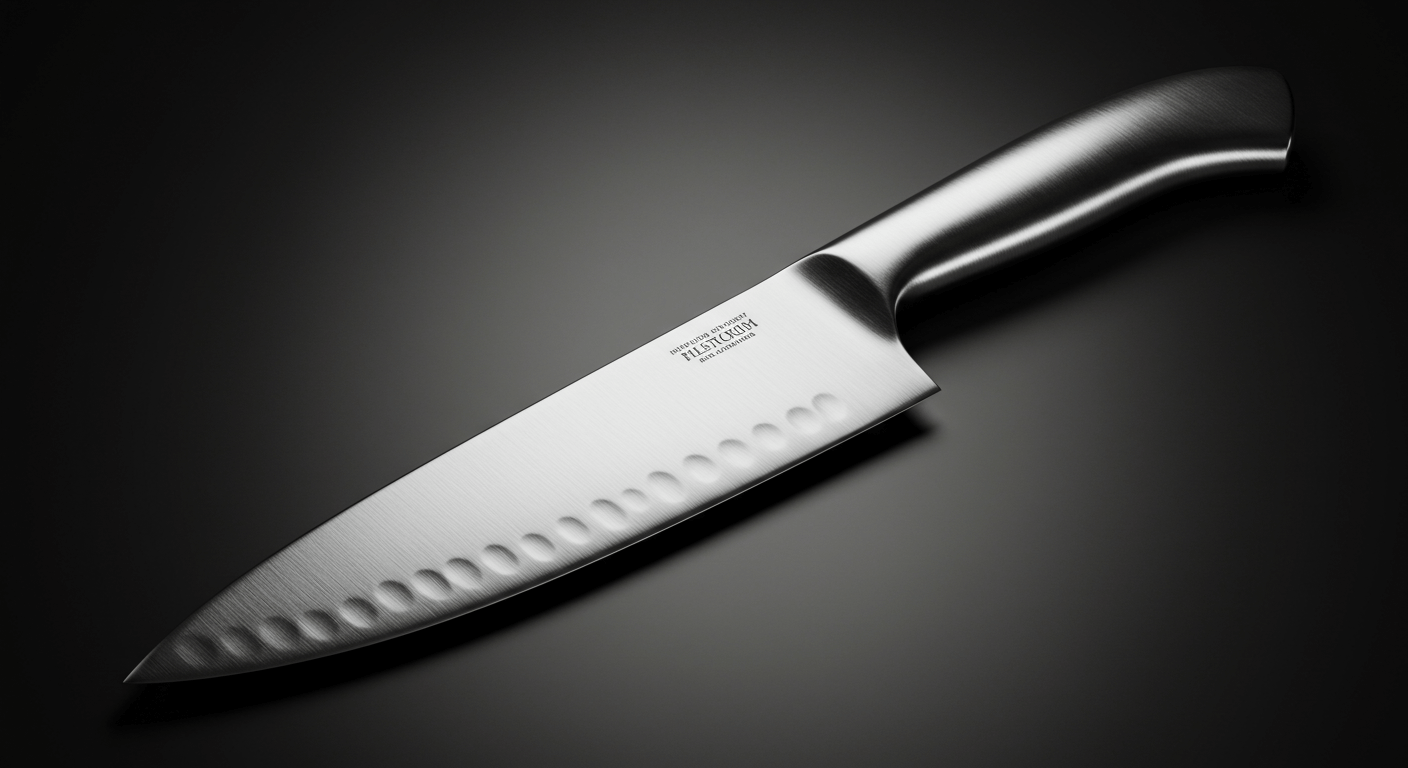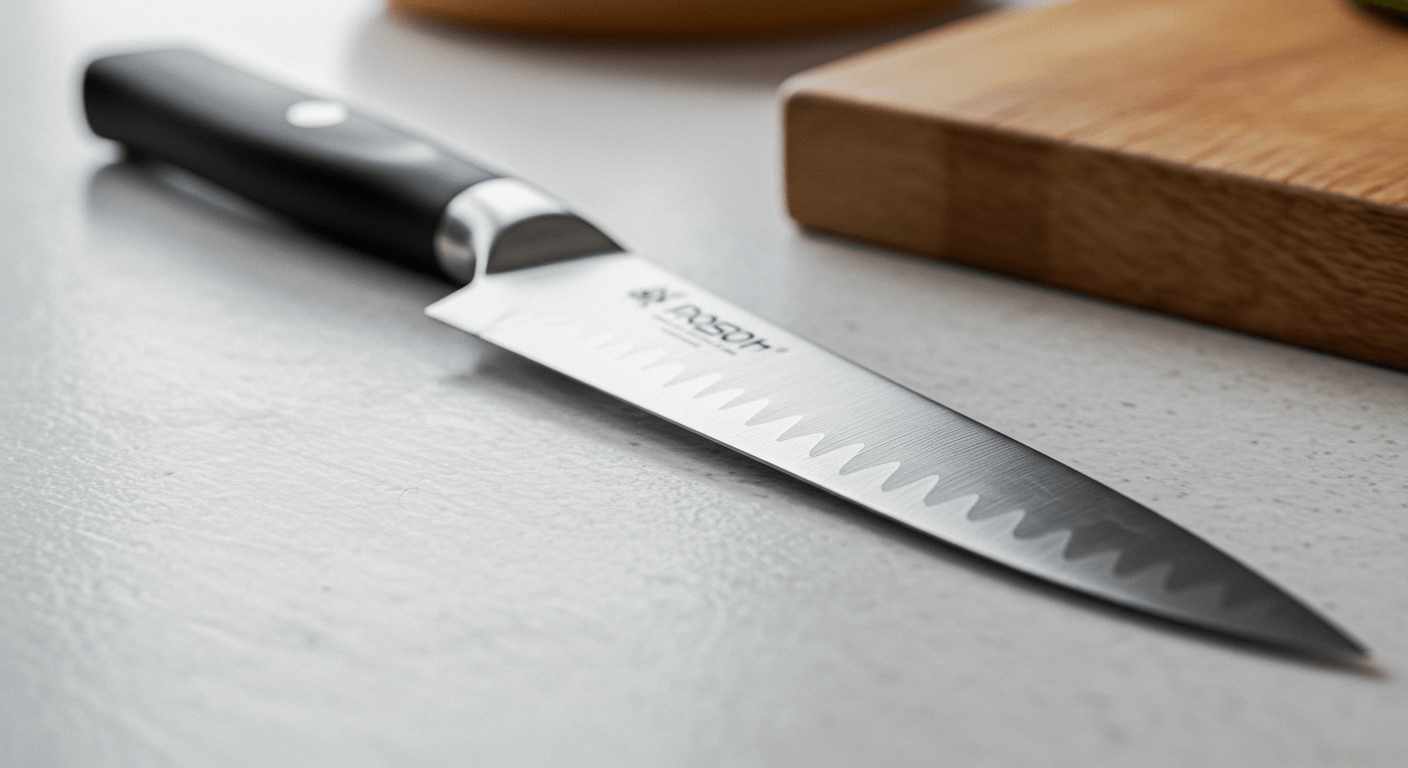Kitchen knives are vital tools that influence the cooking process; they are more than simple culinary implements. With the correct knife, tasks like chopping vegetables, slicing meat, and dicing herbs may be completed more quickly, easily, and safely. But not all kitchen knives are created equal, and using the incorrect kind can have an impact on food quality and efficiency.
Although knives are made for specific uses, many amateur cooks believe that one knife can be used for all culinary operations. The distinct shapes, edges, and sizes of chef’s knives, paring knives, bread knives, and utility knives are all suited to their specific uses. Performance, comfort, and durability are further influenced by materials, handle design, and blade construction.
Selecting the ideal knife is more than just looks. Ergonomic handles, balanced blades, and premium steel all help to improve control and lower the chance of mishaps. Another consideration is maintenance: while some knives are low-maintenance but less adaptable, others need particular attention and frequent sharpening.
Knowing the differences between kitchen knives aids in decision-making for both professional chefs and household cooks. Choosing knives that fit your cooking style, ingredients, and budget is more important than trying to get every knife on the market. Kitchen knife selection, use, and maintenance become easier and more efficient with the correct information.
The primary varieties of kitchen knives, their distinguishing characteristics, and advice on selecting knives that suit certain needs will all be covered in this guide. By the conclusion, readers will know why it might be deceptive to assume that all knives are the same and how choosing the correct knife increases culinary safety and efficiency.
Understanding Kitchen Knives
Kitchen knives are essential cooking instruments that are made to carry out a number of jobs effectively and safely. Knives are fundamentally made up of a blade and a handle, but how well a knife works depends on its construction, materials, and design.
Carbon steel, ceramic, or stainless steel are frequently used to make blades. Because of its strength and capacity to withstand corrosion, stainless steel is widely used in daily life. Sharper and easier to sharpen, carbon steel needs more upkeep to keep from corroding. Although ceramic knives are incredibly sharp and lightweight, inappropriate use can cause them to chip.
Comfort, control, and safety are all impacted by the handle, which is equally significant. Wood, plastic, or composite materials can be used to make handles, and ergonomic designs lessen hand fatigue over time.
Additionally, the weight, balance, and blade form of knives vary, all of which affect how precisely they cut. While a heavier knife may make cutting simpler, a well-balanced knife offers control and lowers the chance of mishaps.
Home cooks can better appreciate that not all knives are made equal by being aware of these fundamental components. The intended use, preferred level of upkeep, and individual comfort all influence the choice of knife. Users can choose knives that increase productivity, accuracy, and general kitchen safety by understanding the basics.
Types of Kitchen Knives

There are numerous types of kitchen knives, each intended for a certain use. Knowing how to use them enhances food preparation’s effectiveness and safety.
Kitchen knives come in a variety of types, each designed for specific tasks. Understanding their uses helps improve efficiency and safety in food preparation.
- The chef’s knife is the most versatile, suitable for chopping, slicing, and dicing vegetables, fruits, and meats. Its broad, curved blade allows for a rocking motion that speeds up cutting.
- A paring knife is small and precise, perfect for peeling, trimming, and intricate tasks like deveining shrimp or removing seeds. Its compact size provides control for delicate work.
- Bread knives feature serrated edges that cut through crusty loaves without crushing the soft interior. The saw-like design makes slicing baked goods effortless.
- Utility knives are mid-sized and versatile, bridging the gap between chef’s and paring knives. They handle smaller tasks such as cutting sandwiches or slicing cheese.
- Specialty knives like boning knives and carving knives serve niche purposes. Boning knives have narrow, flexible blades for removing bones from meat, while carving knives are long and thin, ideal for slicing roasts or poultry.
Making the proper knife choice guarantees that chores are completed securely and effectively. Cooking becomes more efficient and pleasurable when a knife is used for its original purpose, which also minimizes effort, avoids mishaps, and enhances accuracy.
Factors That Make Knives Different
Every kitchen knife is different, and a number of criteria affect how well they work, how comfortable they are, and if they are appropriate for a given activity.
One of the most crucial elements is the blade’s substance. Carbon steel blades are more sharp but need to be carefully maintained to avoid corrosion, whereas stainless steel blades are low maintenance and resistant to rust. Ceramic blades are brittle and can chip if not used properly, yet they remain sharper for longer.
Performance is also impacted by edge type and blade hardness. Softer blades are simpler to sharpen but might dull more rapidly, whereas harder blades may be less flexible but retain their edge longer. Straight edges cut vegetables and meats cleanly, while serrated edges are perfect for slicing bread and tomatoes.
Comfort and safety are influenced by ergonomics and handle design. Handles made of wood, plastic, or composite provide a variety of grips, and ergonomic designs enhance control and lessen hand fatigue.
A knife’s feel in the hand is determined by its weight and balance. While poorly balanced knives require more effort and increase the chance of accidents, well-balanced knives are comfortable and enable precision cutting.
Knowing these elements makes it easier to choose knives that complement one’s culinary preferences, frequency, and comfort level. Efficiency, accuracy, and safety in the kitchen are ensured by selecting the appropriate knife.
How to Choose the Right Knife for Your Needs
Choosing the most visually appealing kitchen knife is not the only consideration. A number of considerations guarantee that the knife suits one’s culinary preferences and level of comfort.
Think about cooking routines and activities. A multipurpose chef’s knife could be useful for home cooks who often mince herbs, chop vegetables, or prepare meat. A paring knife is more suited for finer operations like peeling or trimming. Rather of being used occasionally, specialty knives like bread or boning knives should be used for certain purposes.
Examine the upkeep and materials. Carbon steel knives need to be regularly sharpened and maintained to avoid rust, whereas stainless steel blades are long-lasting and low-maintenance. Ceramic blades require careful handling to prevent chipping, yet they remain sharper for longer.
Verify balance and ergonomics. In order to minimize hand fatigue during prolonged use, the handle should be pleasant. Better control and safer handling are made possible by a knife that is balanced.
Decide on a budget. Although investing in high-quality knives might be worthwhile, not all cooks find that higher prices translate into better results. Put comfort and usefulness ahead of brand prestige.
Home cooks can choose knives that increase kitchen productivity, accuracy, and safety by taking tasks, materials, ergonomics, and budget into account. The performance and enjoyment of cooking are improved by selecting the appropriate knife.
Common Myths About Kitchen Knives
Although kitchen knives are necessary equipment, misunderstandings can result in bad decisions and dangerous behaviors. Home cooks can make better judgments if they are aware of prevalent falsehoods.
Myth 1: High-end knives are invariably superior. Expensive does not always equate to appropriateness. A knife should fit your comfort level, hand size, and cooking requirements. With the right maintenance, even mid-range knives can function remarkably well.
Myth 2: A single knife may be used for all tasks. Every kitchen operation cannot be effectively completed with a single knife. Utility knives, bread knives, paring knives, and chef’s knives all have distinct functions. Precision is increased and effort is decreased when the appropriate knife is used for each activity.
Myth 3: Knives are destroyed by sharpening. A knife’s life is extended and performance is maintained with regular sharpening. The right methods, such as honing and the occasional professional sharpening, guarantee that a blade stays sharp and undamaged.
Myth 4: Knives made of stainless steel require no upkeep. Even though they don’t rust, stainless steel knives still need to be cleaned, dried, and stored carefully to keep them hygienic and sharp.
By busting these beliefs, kitchen procedures become safer and more efficient. Knowing the truth about knives enables home cooks to select equipment that improves safety, accuracy, and efficiency, making cooking simpler and more pleasurable.
Conclusion

Not every kitchen knife is made equally. Every knife is different due to variations in blade material, design, ergonomics of the handle, and intended application. To increase productivity, accuracy, and safety in the kitchen, it is essential to comprehend these elements.
Tasks, culinary style, and individual comfort all play a role in selecting the best knife. Chef’s knives are useful for daily chopping and slicing, paring knives are excellent for delicate work, and specialist knives, such as bread or boning knives, are easy to use for certain jobs. Better control and a lower chance of accidents are ensured by paying attention to the blade’s material, weight, and balance.
It’s also critical to steer clear of prevalent myths. One knife cannot perform all tasks, expensive knives are not always superior, and blade effectiveness is maintained by regular sharpening. To be effective, even stainless steel blades require upkeep and care.
Home cooks can increase productivity and happiness in the kitchen by choosing knives that meet certain needs and being aware of their special qualities. Knives are dependable instruments for many years to come when used and maintained properly. By taking the time to become knowledgeable about knives, one may make better decisions and make everyday cooking safer and more enjoyable.
